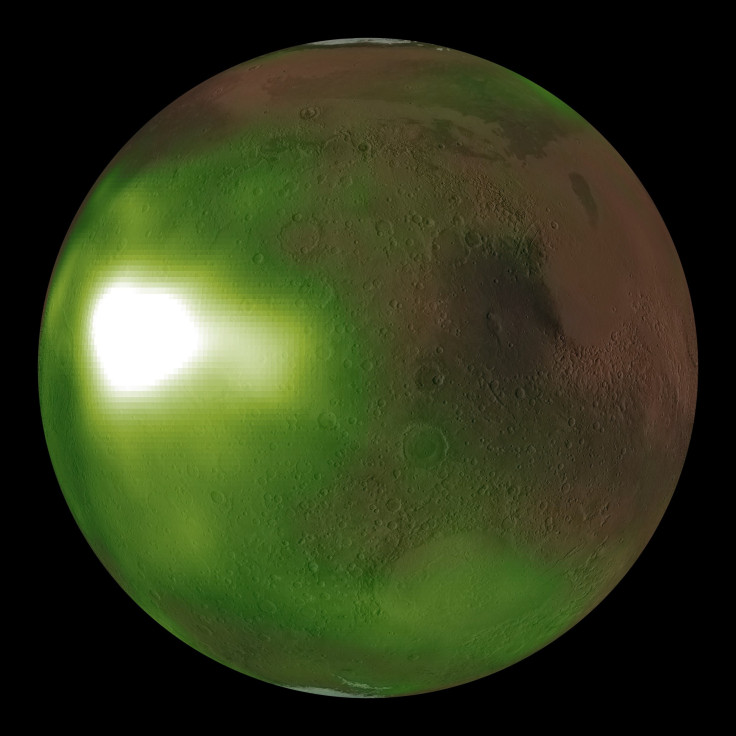NASA Spacecraft Watches As Mars Pulsates In Ultraviolet Light [VIDEO]
KEY POINTS
- The MAVEN spacecraft observed the bright flashes in Mars' atmosphere
- The flashes occurred regularly during the spring and fall seasons on Mars
- The flashes are only visible in ultraviolet light
A robotic spacecraft launched by NASA was able to capture images of bright flashes of ultraviolet light in the atmosphere of Mars. Based on the data collected by the spacecraft, the flashes occur almost regularly.
The latest images of the Red Planet were taken by the Mars Atmosphere and Volatile Evolution (MAVEN). This spacecraft was launched by NASA in 2013 to observe and study Mars’ atmosphere.
During the spring and fall seasons on Mars, MAVEN detected bright flashes coming from the planet’s atmosphere. According to the data collected by the spacecraft, Mars’ atmosphere pulsated exactly three times after sunset over the course of one planetary rotation.
According to Nick Schneider of the University of Colorado's Laboratory for Atmospheric and Space Physics (LASP), one of the scientists who analyzed MAVEN’s data, the pulses were most likely caused by the chemical reaction in the atmosphere caused by winds moving downwards. The reaction creates nitric oxide, which serves as the main chemical behind the glowing pattern.
“MAVEN’s images offer our first global insights into atmospheric motions in Mars’ middle atmosphere, a critical region where air currents carry gases between the lowest and highest layers,” he said in a statement.
According to the scientists, the bright flashes appear at an altitude of about 70 kilometers. Based on the images collected by MAVEN, the brightest flash had a diameter of about a thousand kilometers.
Although the bright flashes appear as spectacular phenomena in Mars’ sky, the scientists noted that they are not visible to the human eye. MAVEN was only able to spot the atmospheric pulses through its ultraviolet imaging instrument.
“Unfortunately, the composition of Mars’ atmosphere means that these bright spots emit no light at visible wavelengths that would allow them to be seen by future Mars astronauts,” Zac Milby of LASP said in a statement. “Too bad: the bright patches would intensify overhead every night after sunset, and drift across the sky at 300 kilometers per hour.”
The study conducted by the scientists on the data collected by MAVEN on Mars’ atmosphere was published in the Journal of Geophysical Research: Space Physics.

© Copyright IBTimes 2024. All rights reserved.











